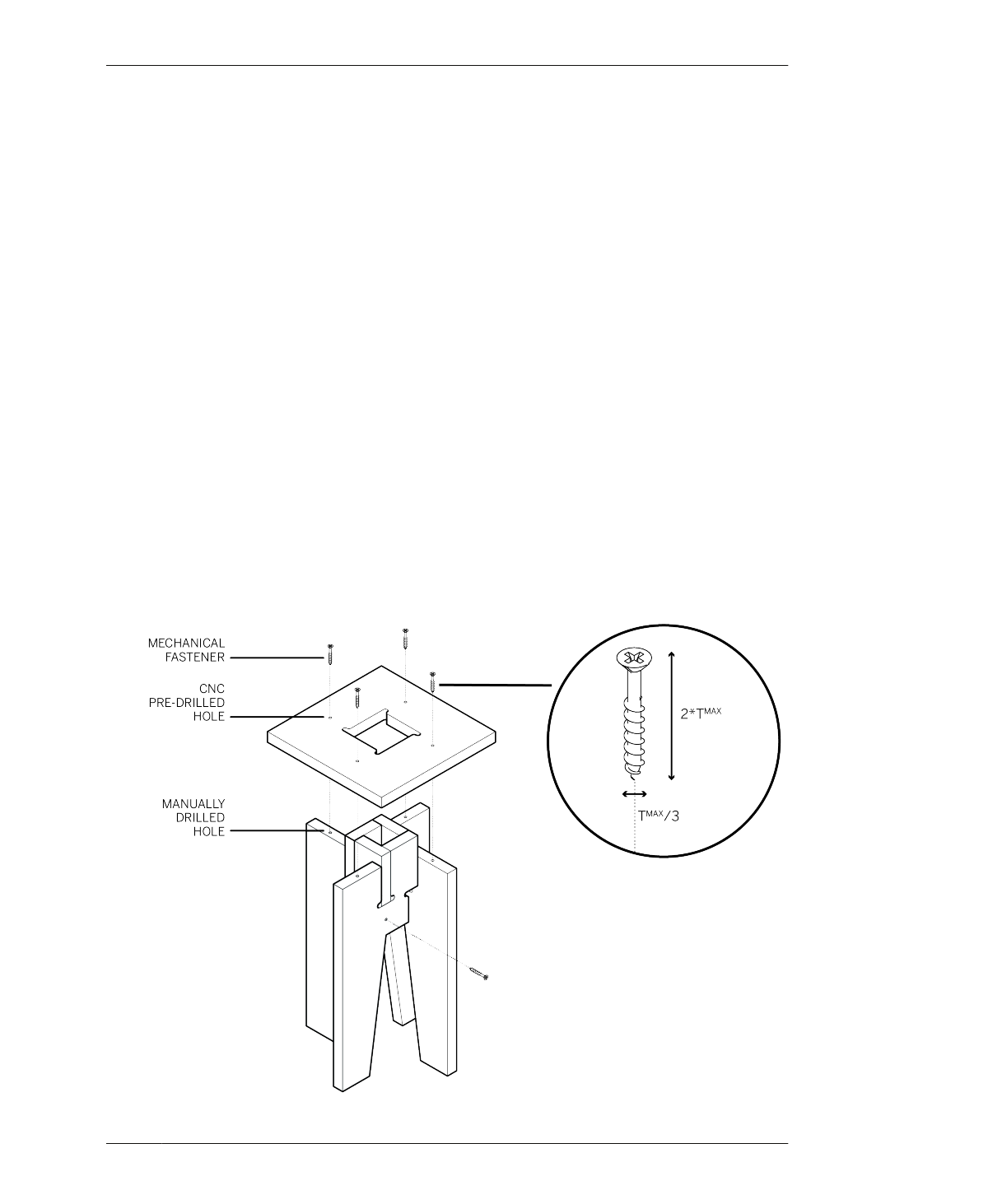
FASTENERS
choice of hardware. Fasteners ranging from
wooden pegs to heavy-duty industrial fasteners
to the lightest of screws will do the job and can
be as minimal or as expressed as you want.
Wooden pegs, either prefabricated or cut to
size from dowels, create a subtle inlay detail
against plywood parts. Since pegs are glued
into place, they are best used for furniture that
won’t be dismantled. Peg and hole diameters
should match so that the peg fits through the
hole, requiring a bit of pressure. Length should
be about twice your material thickness (2 *
TMAX). Dowels are best inserted with a very
small amount of adhesive in order to fix the fur-
niture parts and the dowels themselves in
place.
If you intend to dismantle a piece of furniture,
or you just like the ease and appearance of
hardware, it’s best to use screws that are easily
removed and reused. Polished finishes are
often better at reflecting the furniture material,
so they end up blending in to the surrounding
material. Like dowels, fasteners should be
about twice your material thickness (2 * TMAX).
Any less and the fasteners aren’t bearing
deeply enough into the material, and any longer
demands more drilling and screwing than is
really necessary.
Fasteners should match the hole made by your
CNC router so that the shank passes through
the hole with threads just grazing the interior.
The screw head diameter should always be
greater than the hole diameter. Select a thread
diameter no greater than one-third of your
overall material thickness (1/3 < TMAX), which
should ideally match the hole made by your
CNC router. We often work with Stafast decora-
tive screws, particularly the small, flush-
mounted SCS0540HD. With a length of about
FIGURE 8-5
Length (2 * TMAX) and
diameter (1/3 < TMAX)
fasteners pass through
pilot hole and into
opposing part
08/ROTATIONAL STOOLS
205
